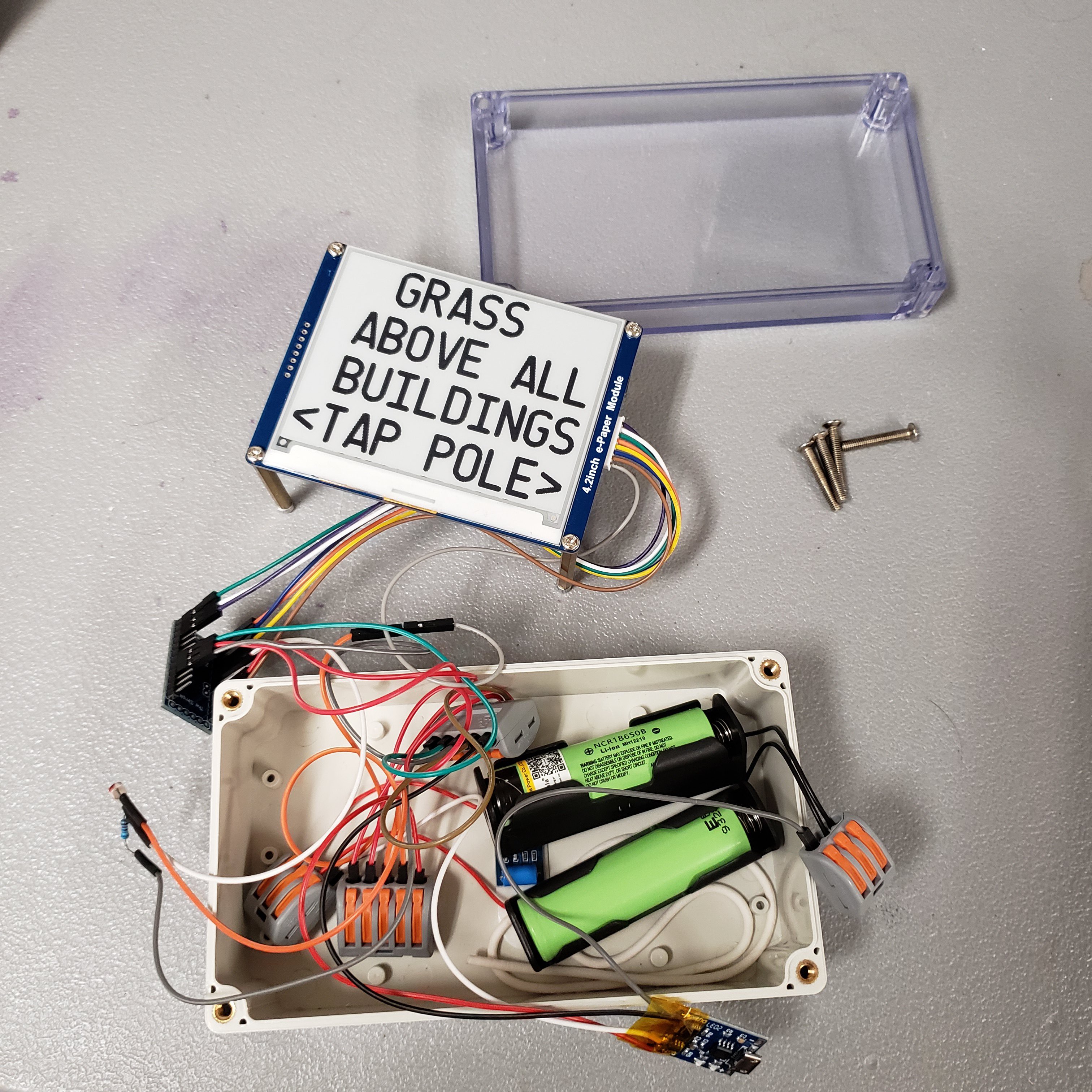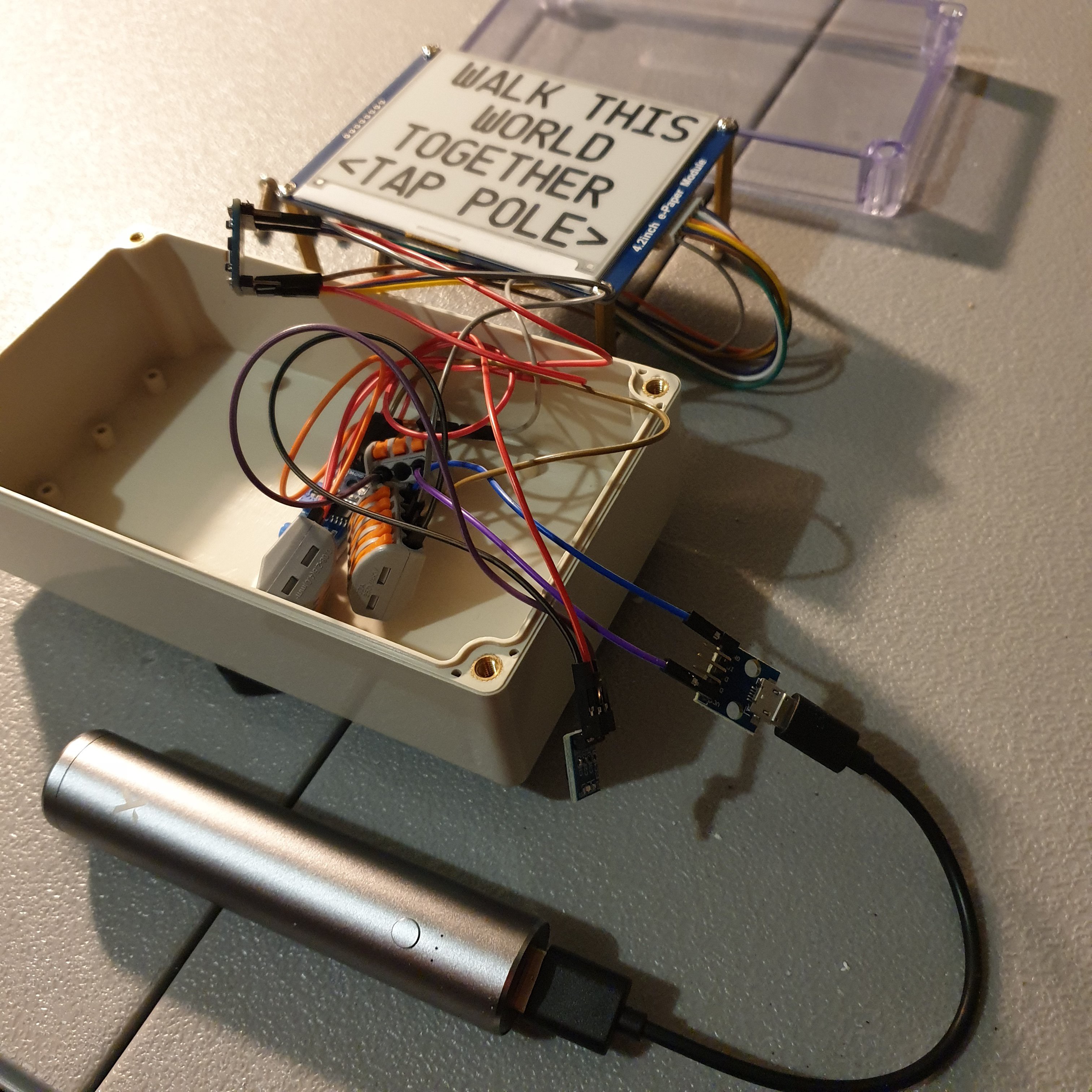-
LDR, sleep mode, and TP4056 battery charger module
03/03/2022 at 02:16 • 0 comments![]()
Recent changes to the PostNote design achieves close to 1.5 months of operation.
The Arduino Pro Mini microcontroller now goes into sleep mode if light is not detected by an LDR. Once asleep, the watchdog timer wakes the microcontroller up every 8 seconds. If the LDR detects no light, then the microcontroller goes back to sleep and the wake/sleep cycle continues. If light is detected, the main PostNote sketch is executed.
Adding the TP4056 battery charger module ensures that the 18650 batteries don't discharge below minimum voltage this time. This reduces the amount of total energy that can be draw from the batteries, but it also means the batteries don't get damaged and can be recharged.
-
New Battery Strategy
03/22/2021 at 03:59 • 0 comments![]()
I installed two fully charged 3Ah 18650s connected in parallel to the Postnote device back in mid January. I noticed that power was no longer being supplied to the device in early March. My goal is to achieve at least three months between battery charges so I am starting to consider putting the microcontroller into sleep mode at night, increasing battery capacity, and potentially adding a solar panel.
One other issue was that there was no battery management device to prevent voltage of the battery cells from discharging to below 2.5V. The two 18650s were measuring less than 1V after the month and a half period. My plan is to instead use a USB phone backup battery stick. It should prevent the battery from dropping below voltage. As a bonus, it already has the charging circuit so can be recharged from any 5.0V USB source.
-
Tamper-proof Interaction
01/25/2021 at 17:10 • 0 commentsAn interesting challenge of this build was developing a way that users can interact with a device in an urban environment but also give them little opportunity to tamper with or destroy the device.
One of my first thoughts was to have users interact with the device using a laser pointer. This would allow the device to be placed far enough out of reach that users could not easily tamper with it but would have no issues targeting it with a laser pointer. I ultimately gave up on this approach because there is a signifant amount of low flying air traffic at the park where I had considered installing the device. That and the other hazards of laser pointers that make them less appropriate for children.
The final solution I arrived at was enabling users to interact with the device by tapping on a metal pole. I was already planning on mounting it to a metal pole using a magnetic mount so this made a lot of sense. Just like the laser pointer solution it can be placed out of reach. The additional benefit is that a special tool is not required to interact with the device. Users could just tap the pole with a stick or maybe the side of their phone.
 John Opsahl
John Opsahl
